Guards Museum London
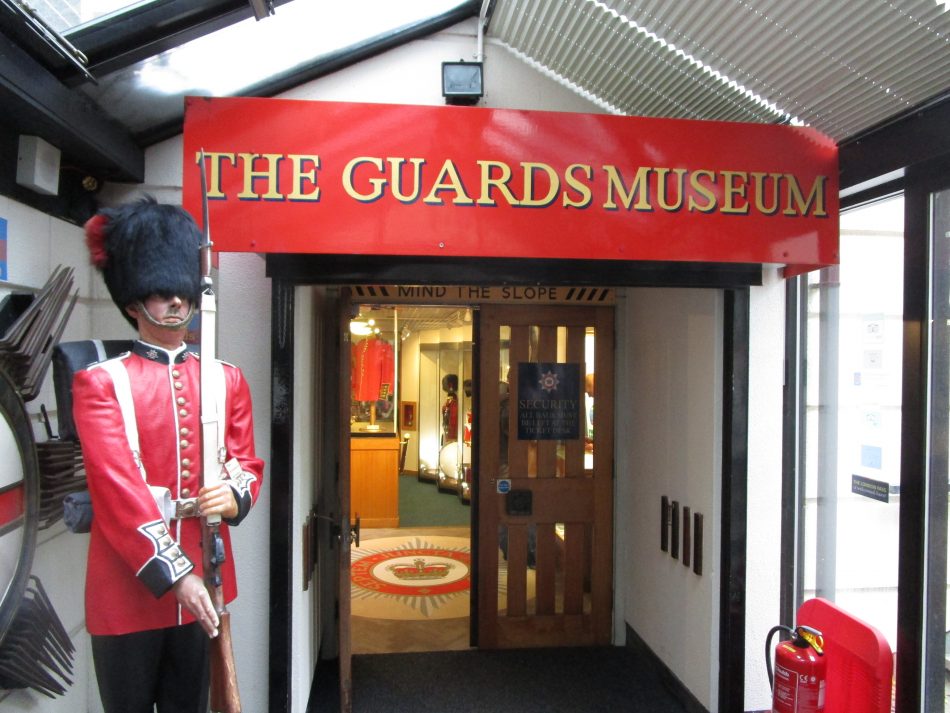
By Robert Kelly
Located between the Guards Museum and Buckingham Palace is Wellington Barracks. That is the home to the troops who are on ceremonial duties and conduct the changing of the guard ceremonies. Here are a group of Irish Guardsmen getting ready for parade. I found this part quite interesting and there were no crowds.
Then I followed the troops to Buckingham Palace. The British tend to make the forming up and inspecting of troops a long drawn-out affair, but those from other armies might find it interesting.
In fact, a US veteran was standing at the fence with me and I explained a few things. Most don’t know that one of the reasons that the officers “promenade” back and forth along the edge of the parade square is to show sobriety. This goes back a long time when drinking was one of the few forms of entertainment for the troops and for officers.
This Ferret scout car shows you the way to the museum. Unfortunately, it’s the only vehicle in the museum.


Even the band gets inspected. This time it was a dismounted band from the Household Cavalry.

It costs eight pounds for an adult to enter the museum, and five pounds with military identification. They accepted my Canadian ID and the very helpful and pleasant volunteers mentioned that they get military personnel visiting from all over the world.
A series of uniforms greet you at the entrance. They also have a nice video that will teach you some of the more important things about the Guards. You will learn what the different coloured plumes mean along with how to distinguish the different battalions by looking at their button spacing or their collars.
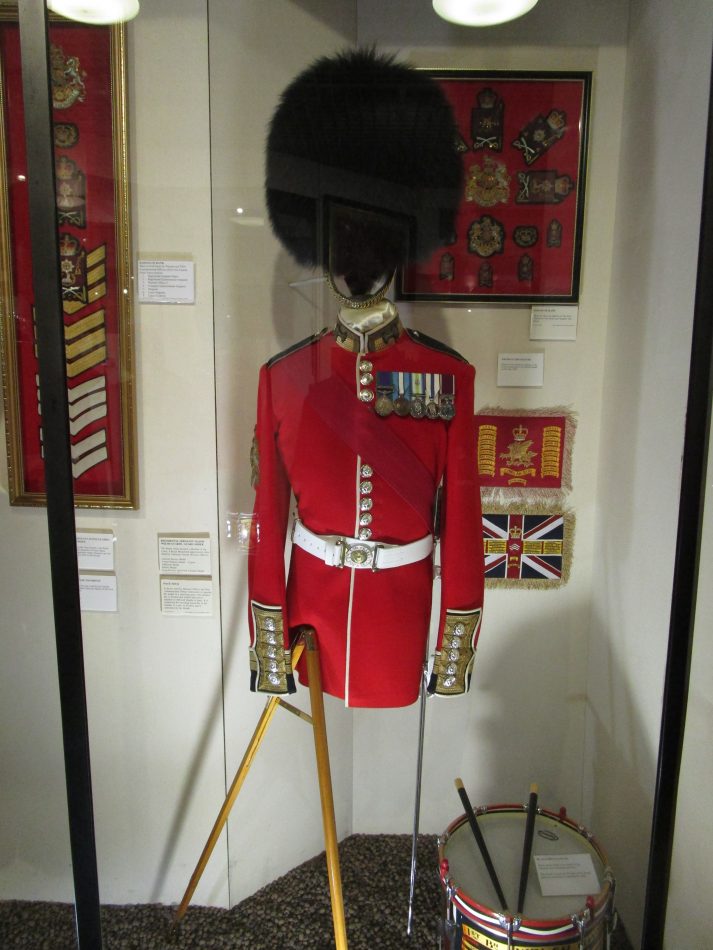
A Scots Guards Officer’s patrol uniform.
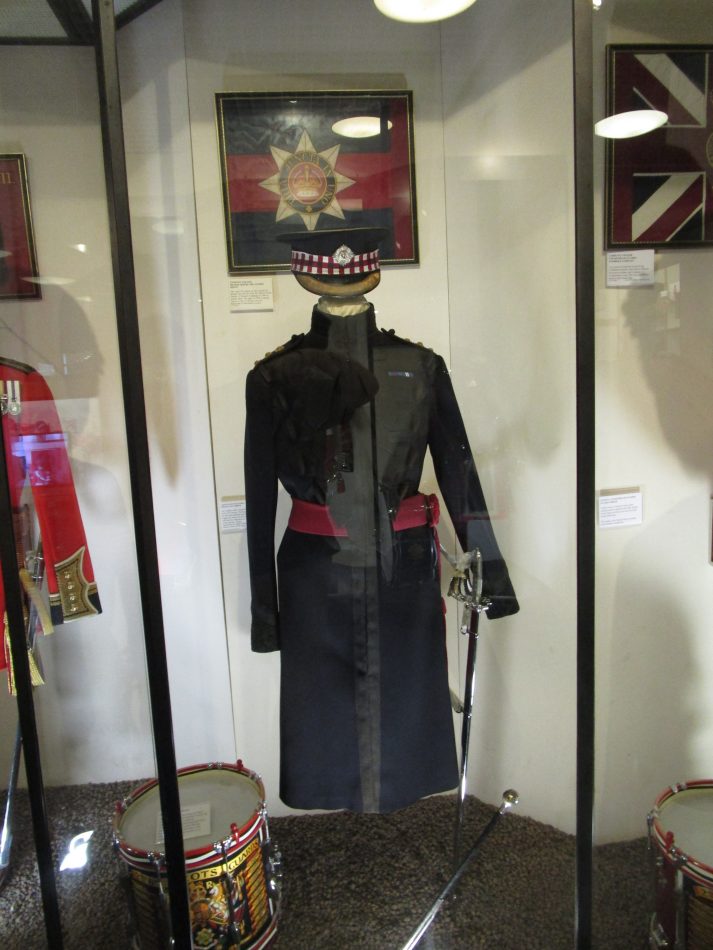

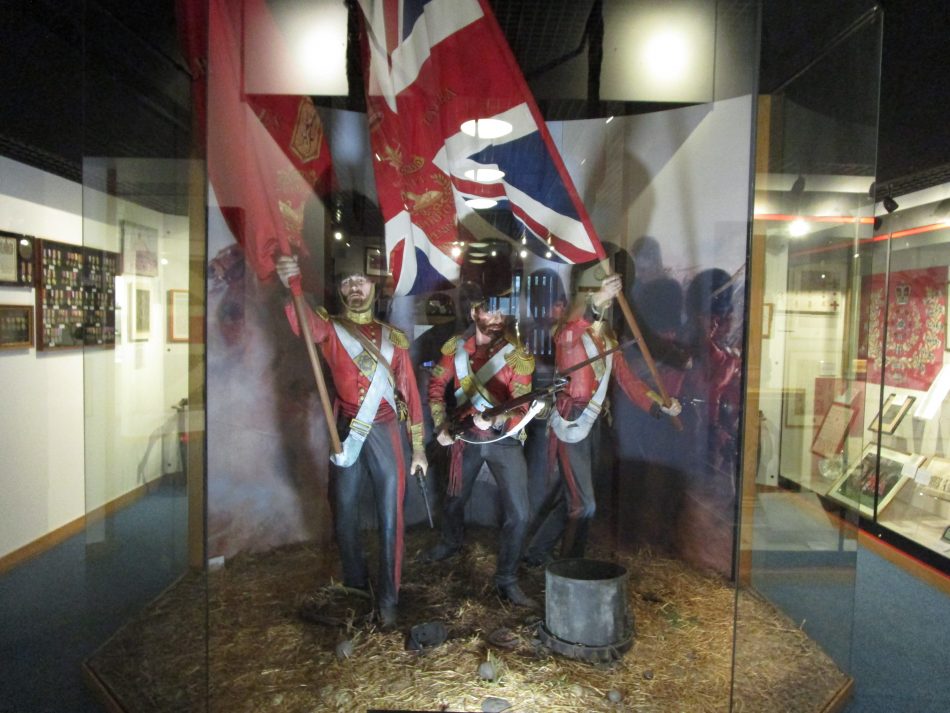
The shop used to be a top-notch toy soldiers store, but they said that Covid ended that.

This first Guardsman from over 360 years ago.
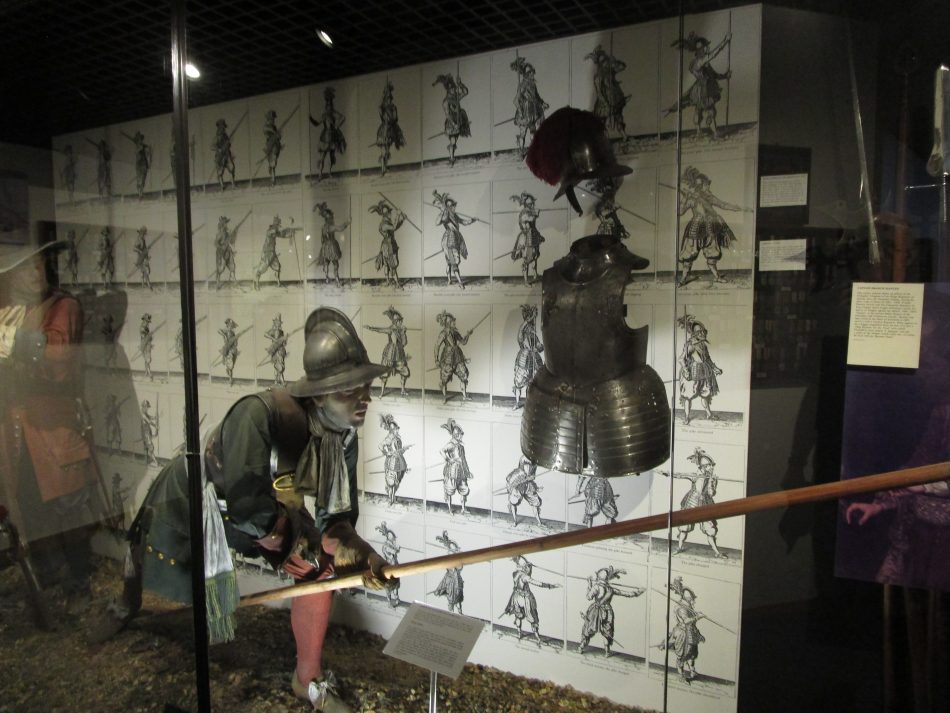
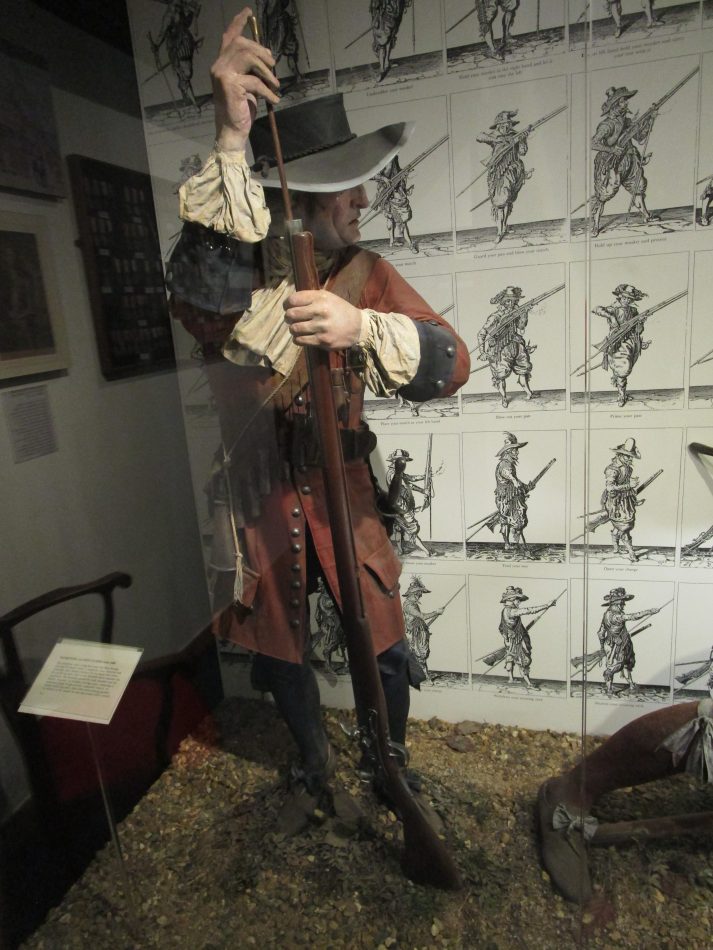
A diorama of The Storming of Schellenburg in 1704 under the Duke of Marlborough.
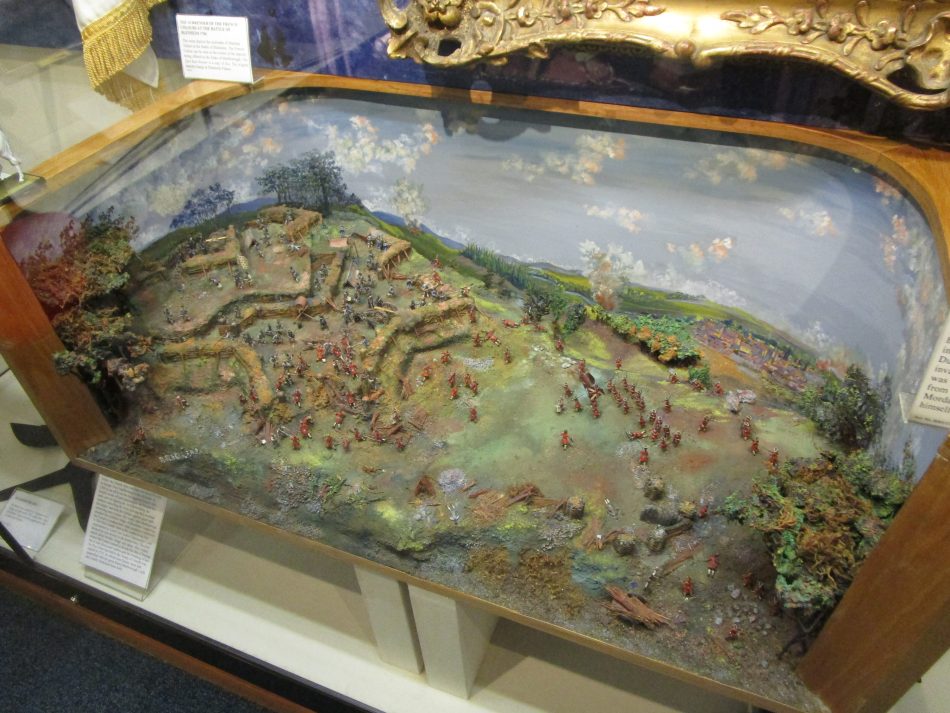
A guards officer’s shako from the Battle of Waterloo
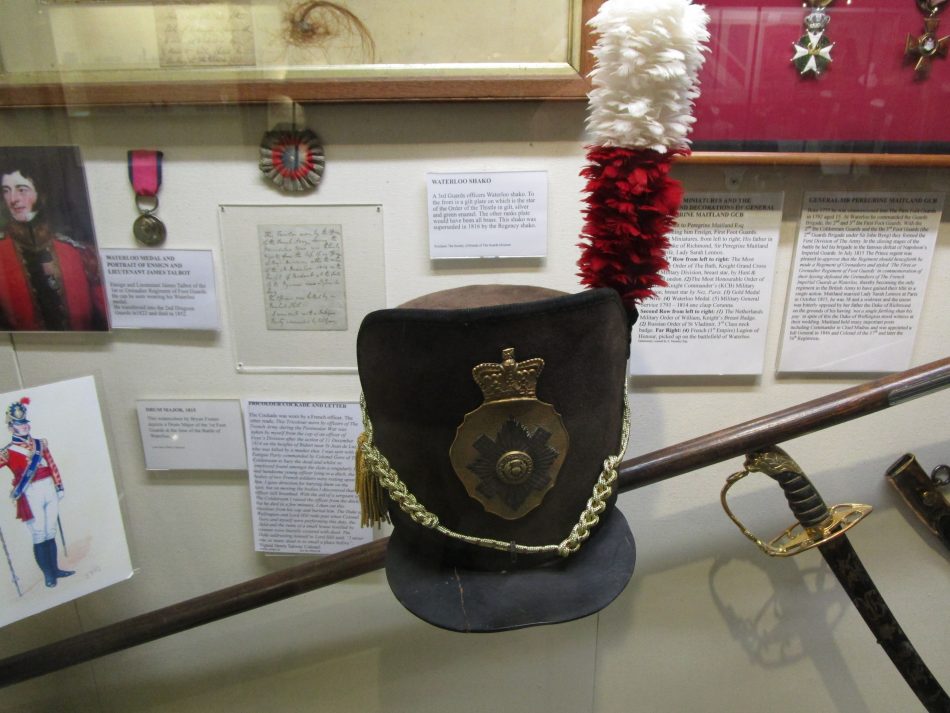
Two scenes from the defence of Hougoumont during the Battle of Waterloo.
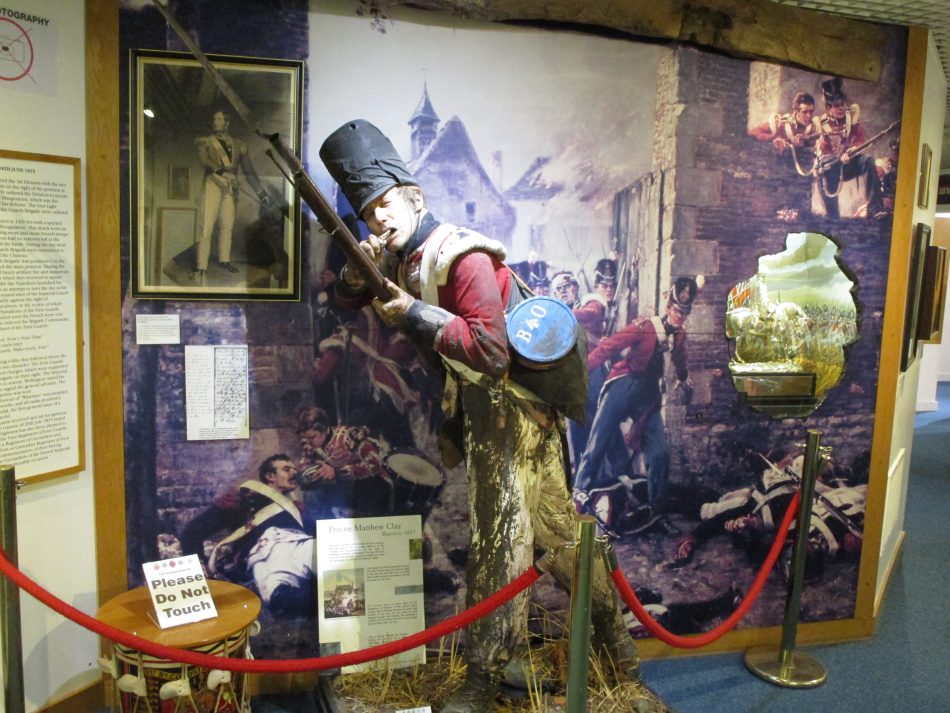
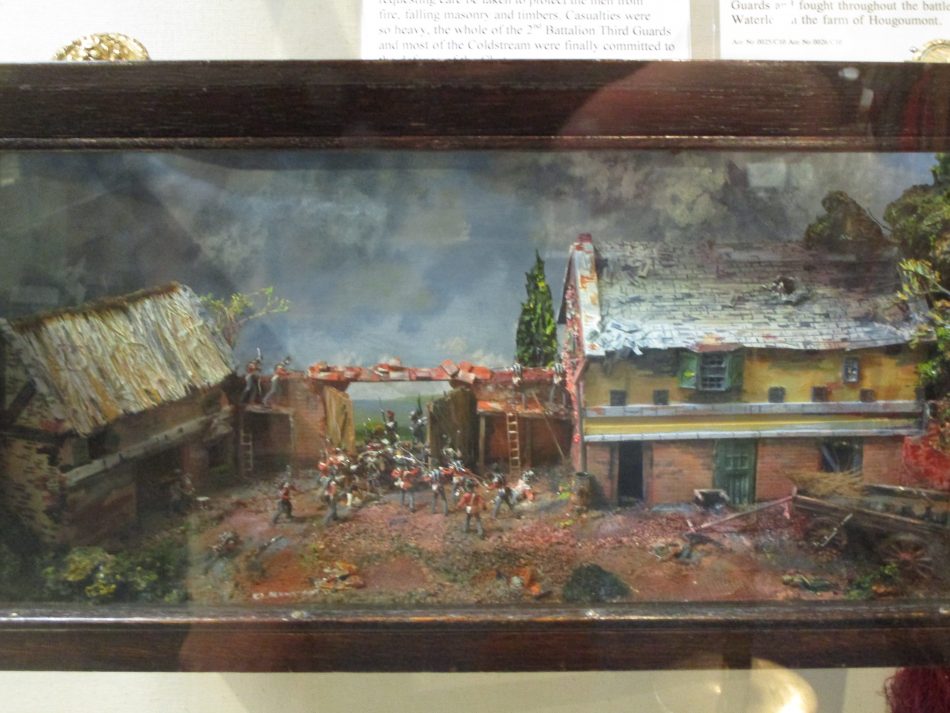
The Duke of Wellington’s dress tunic. One of the museum’s prized possessions.


A display from the campaigns in Egypt and Sudan, 1882 to 1898.

There is an area chronicling the Guards’ participation in the South African War.
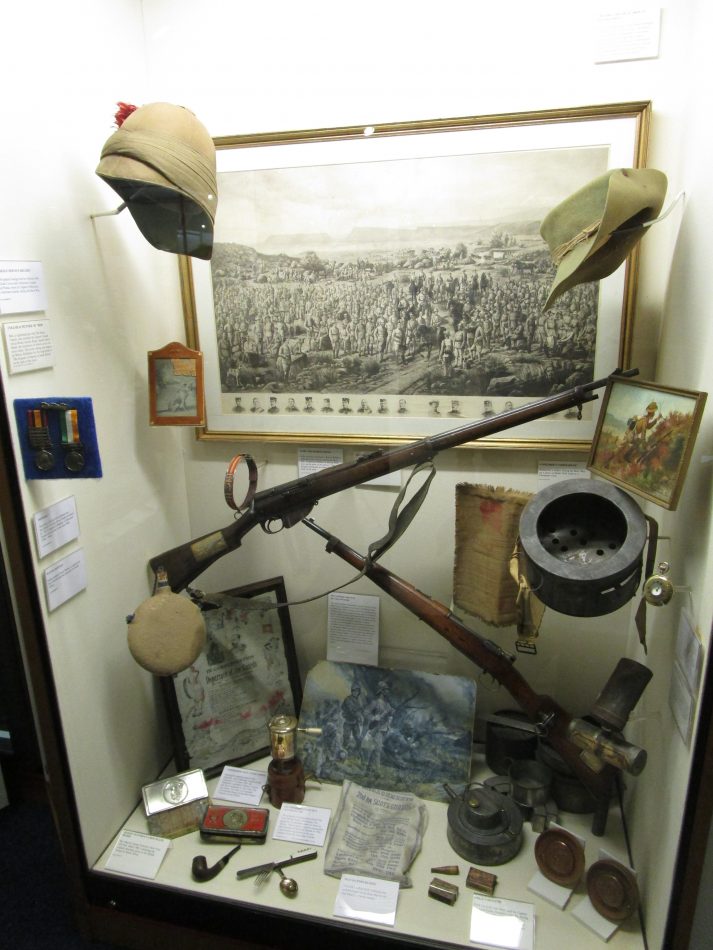
Here is an officer in mess dress and regimental trophies and silverware. The mess is a big part of the social life of a regiment. And it falls on the subalterns (lieutenants and second lieutenants) to polish the silver before big occasions and dinners.
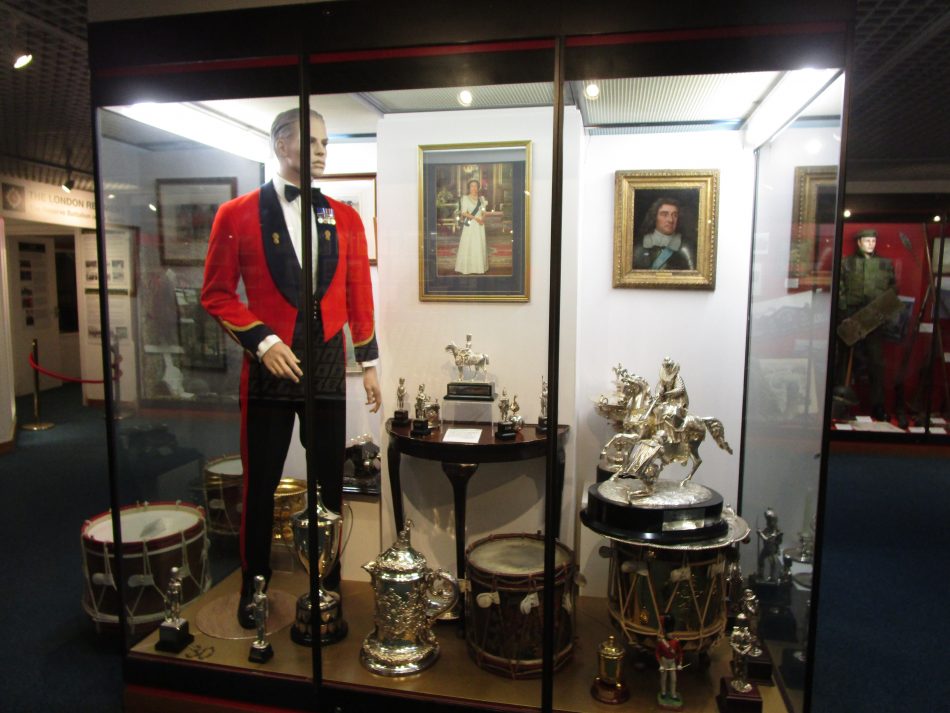
One of the WW1 displays.
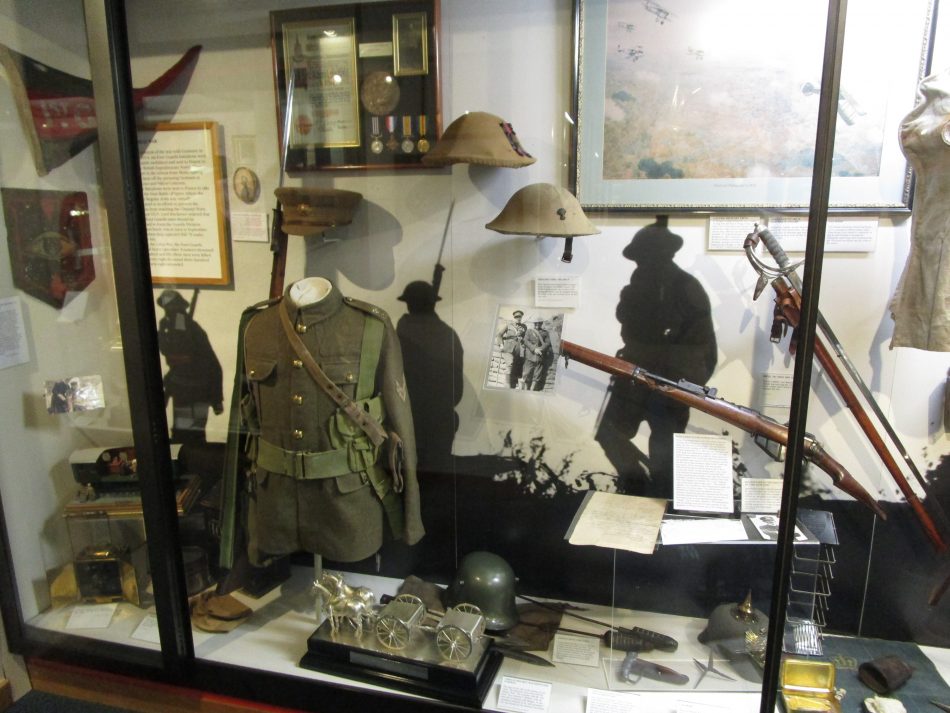
General Alexander’s jacket. For some reason, I didn’t’ take a lot of photos from the WW2 area.
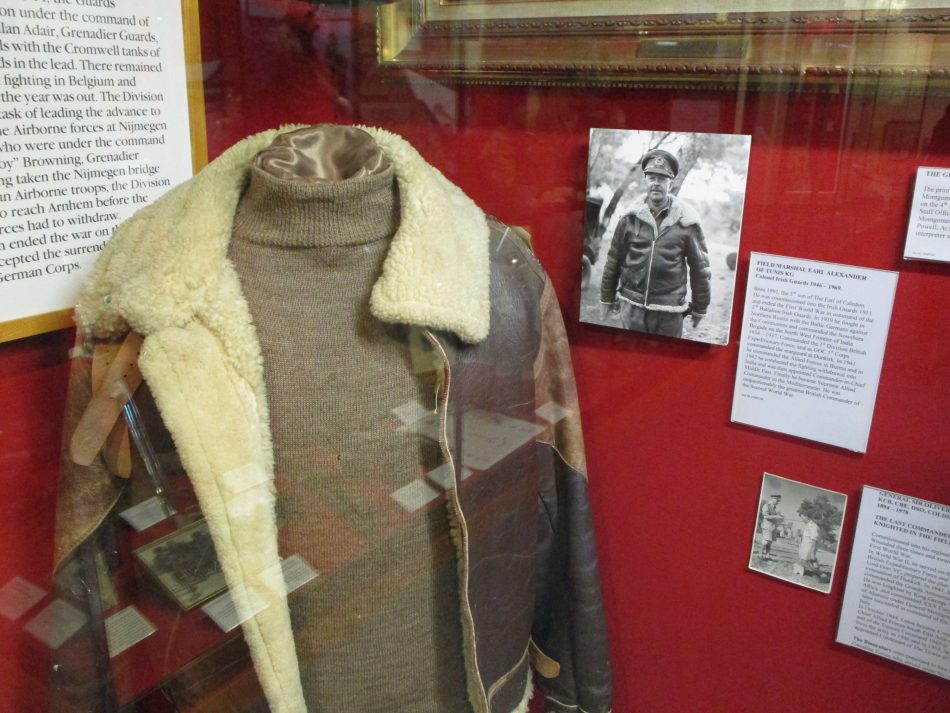
A couple of tank models from back in the day.
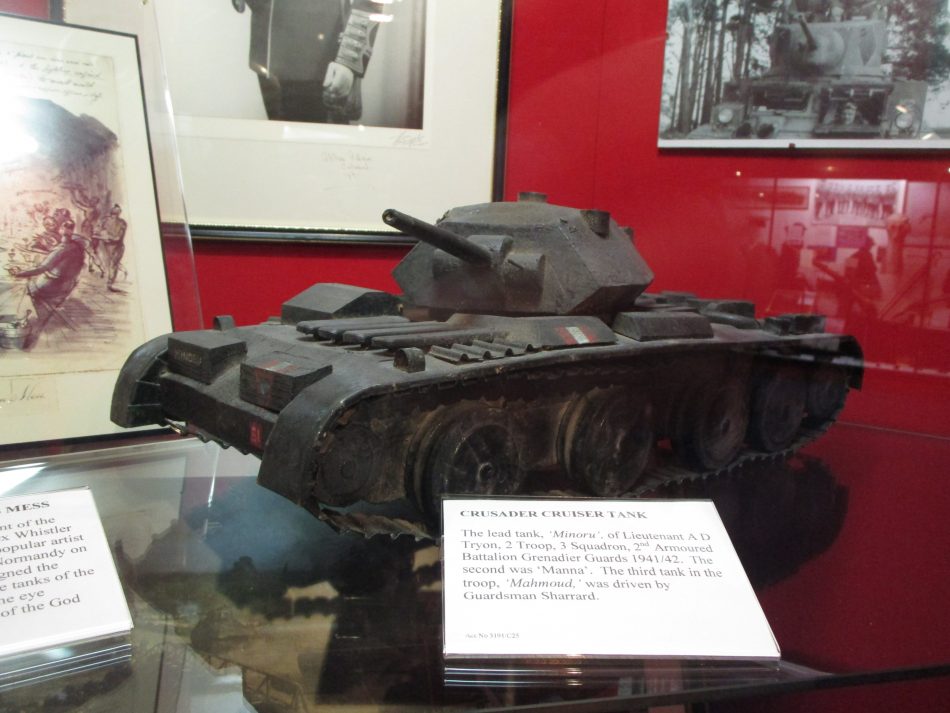
Although they were Foot Guards, some battalions became armoured during the war.

The Guards had their own company as part of the Parachute Regiment. The display includes a depiction of a soldier serving in Northern Ireland on the right.
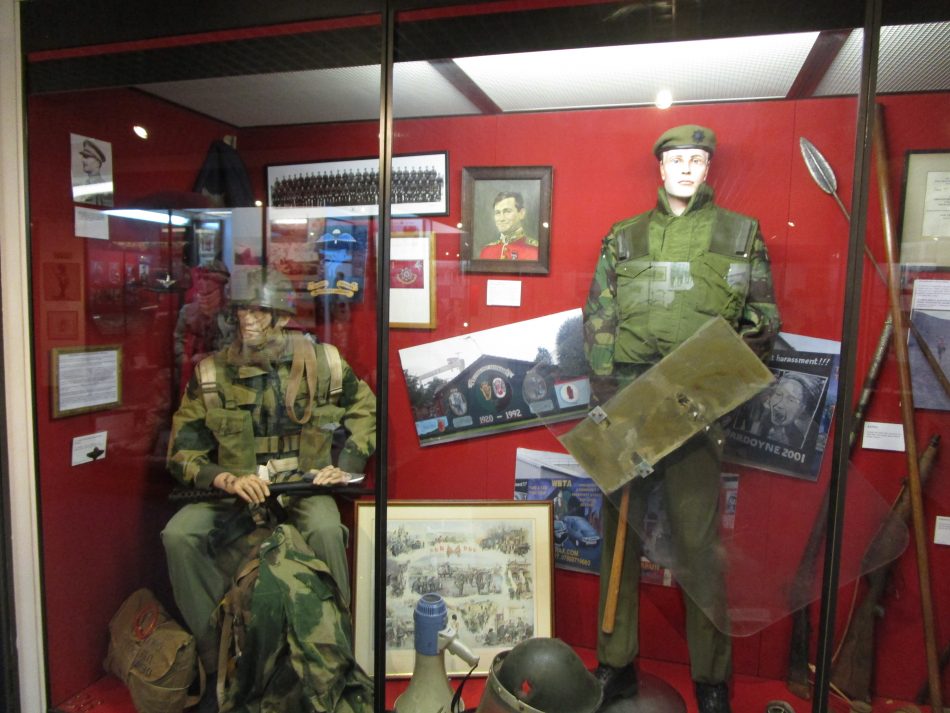
The Falklands Campaign is one of my favourite wars. Here is the battle map of the attack on Mount Tumbledown.
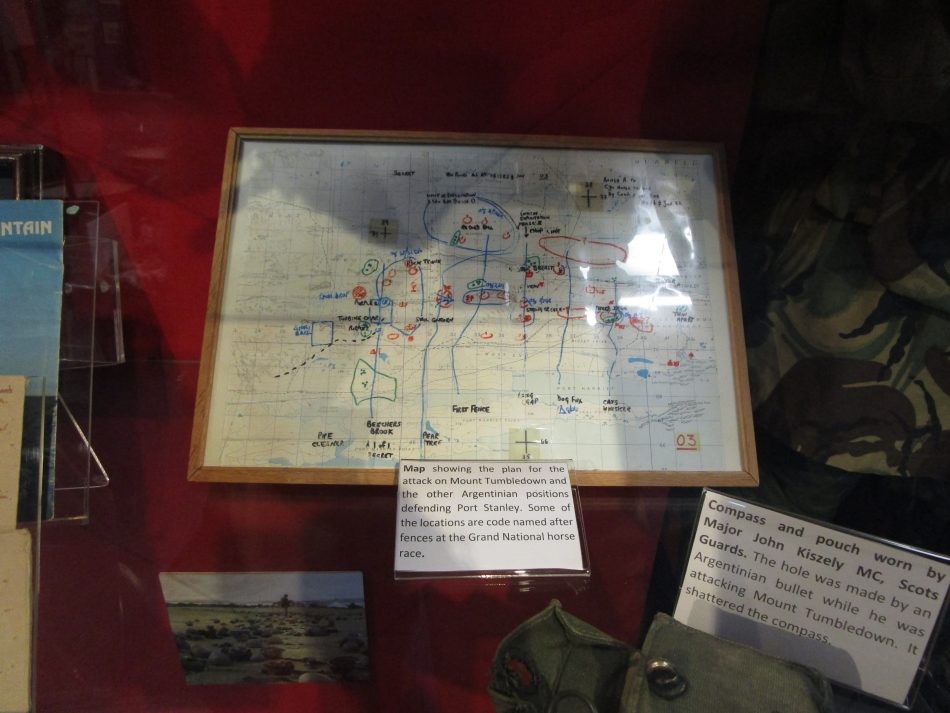
A guardsman kitted out to fight in the Falklands.
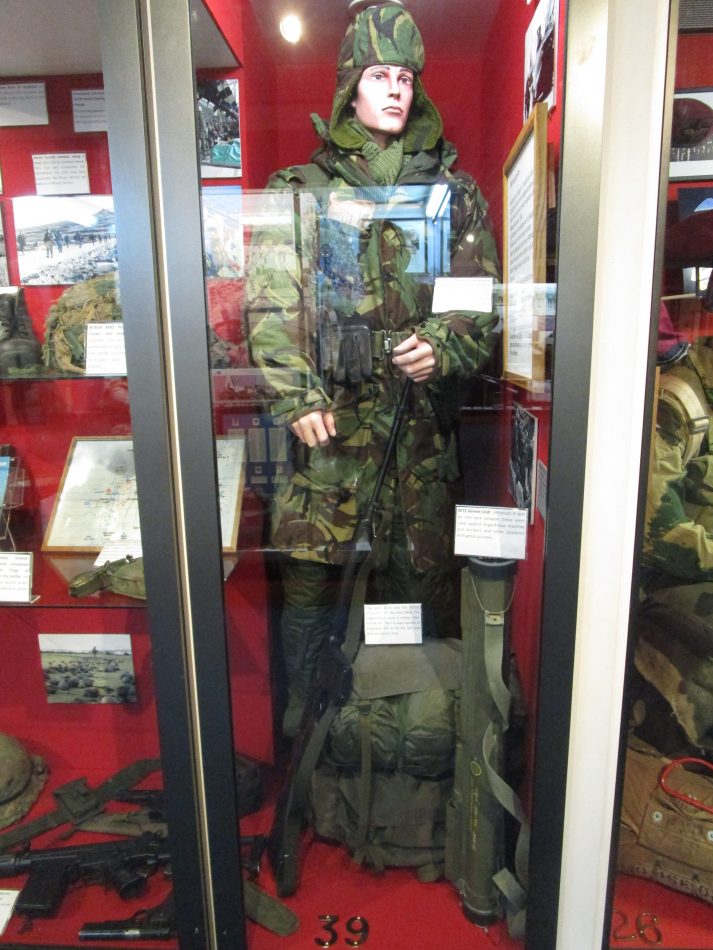
A pair of boots worn by a company commander in the Falklands. A far cry from the “Gucci” boots that are available today.
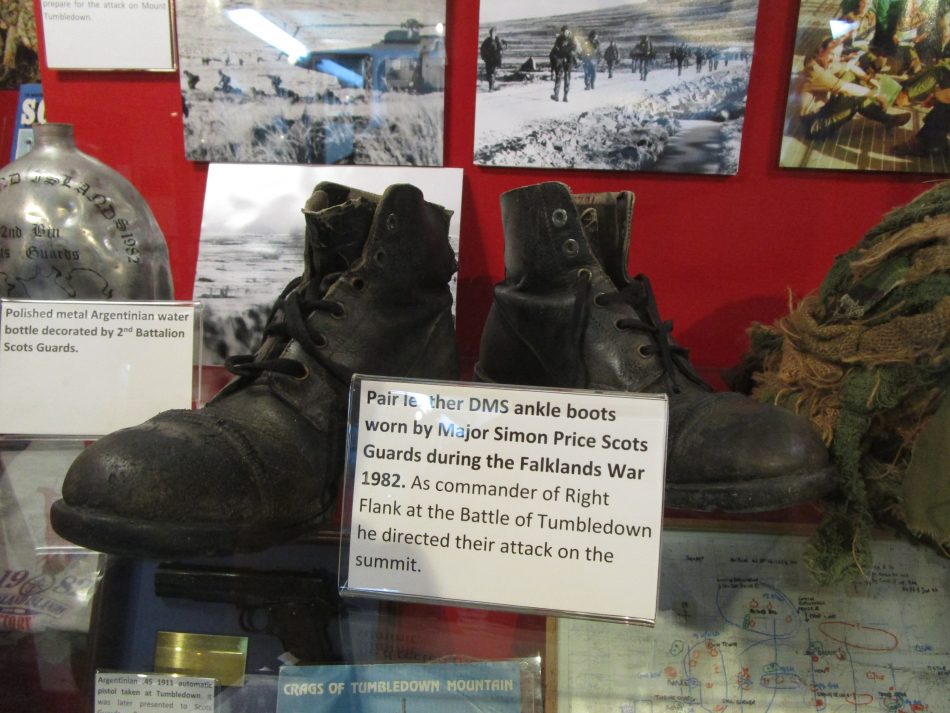
Argentine weapons.
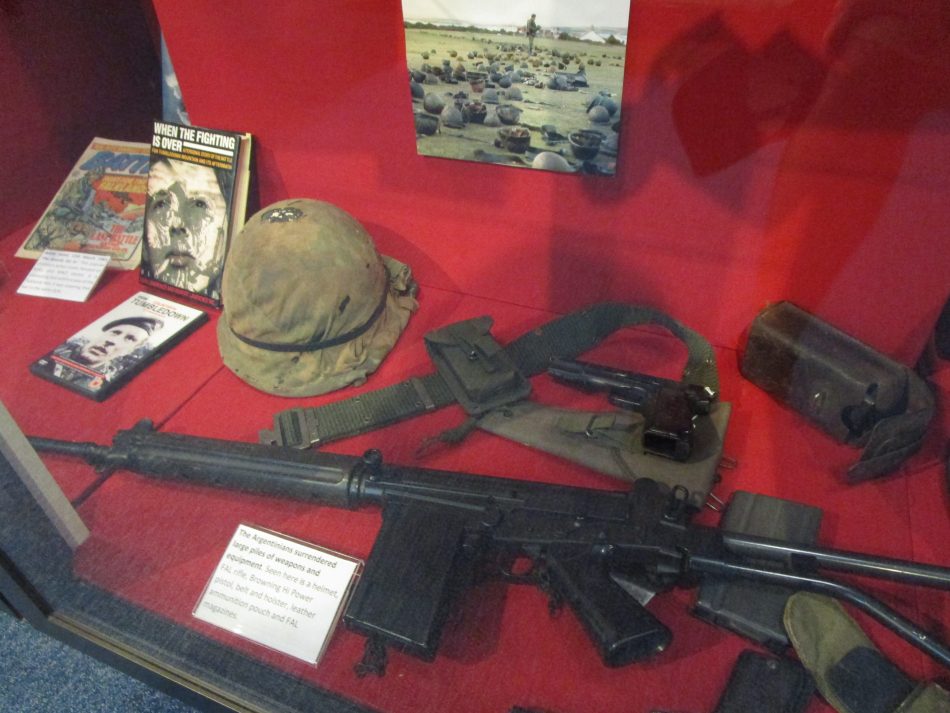
SAS garb from Desert Storm. “G” Squadron of 22 SAS Regiment was made up of Guardsmen, hence the name “G” squadron.
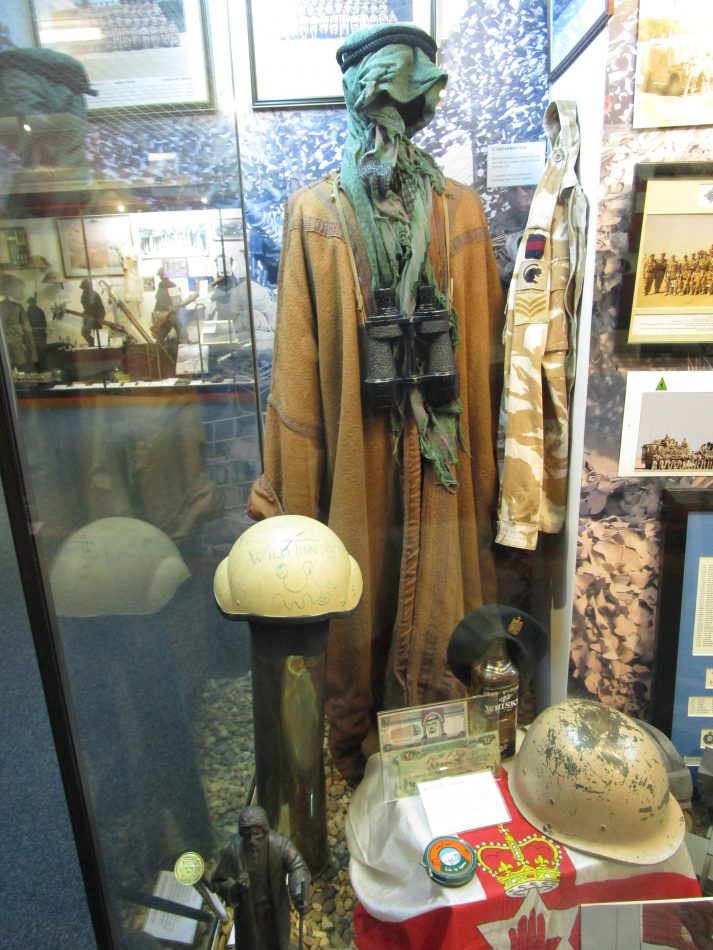
Here is a soldier from the war in Iraq.
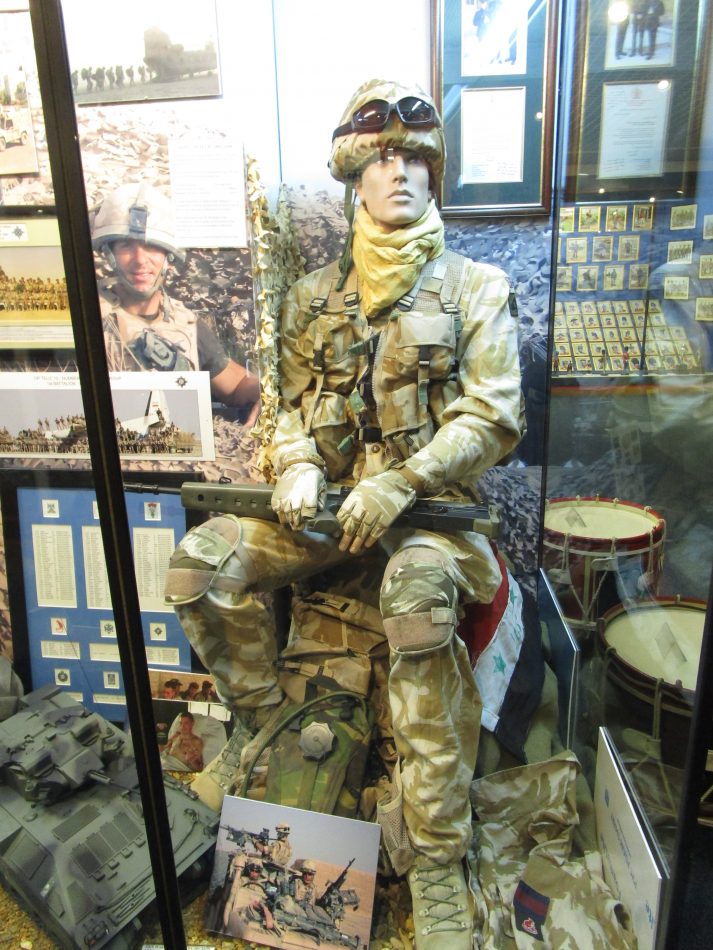
A nice large-size Warrior model.

The museum isn’t large, but the display cabinets are full of fascinating artifacts. You could spend days looking at everything, but an hour or two will suffice as there are so many other places to explore in London.
Just outside the museum is the Guards Chapel. It is here that old “colours” or flags are kept.
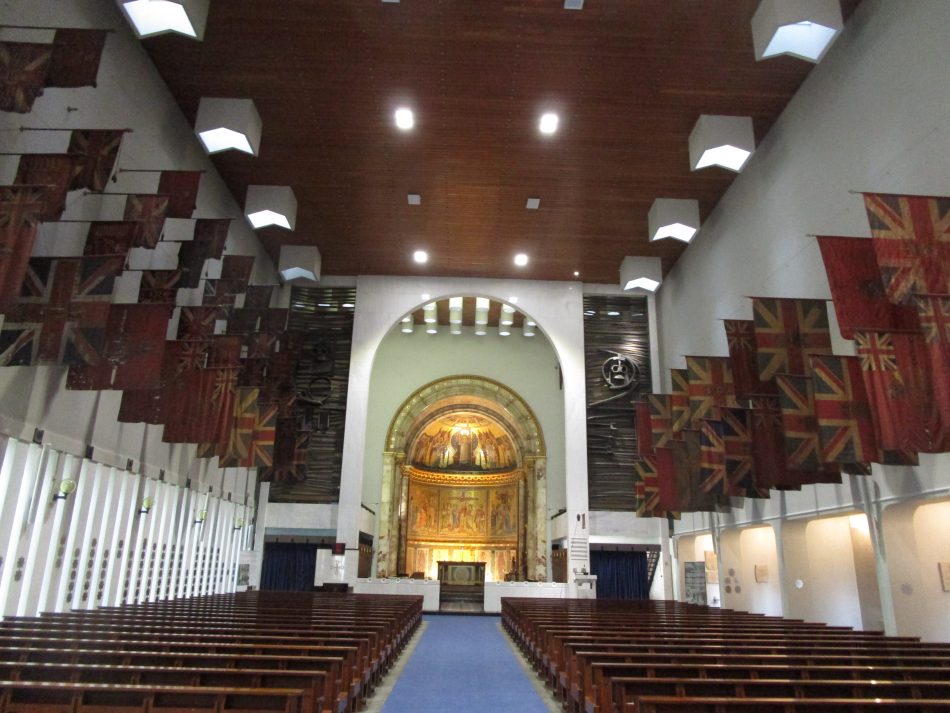
Next up will be an article on the National Army Museum in London. There is an interesting tie in there with Team Yankee. The Imperial War Museum is the most well-known of the military museums but the little-known Army Museum is excellent as you will discover.

I made a mistake. It’s not a Scots Guards patrol uniform, but rather a frock coat.